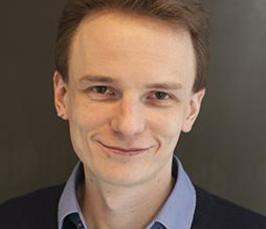QUANTUM ORIGINS OF MAGNETIC SENSING
Institutskolloquium
- Datum: 03.12.2021
- Uhrzeit: 10:30 - 12:00
- Vortragender: Prof. Ilia A. Solov’yov
- Professor Ilia Solov'yov received his first Ph.D. with honours in Physics from the Frankfurt University (Germany) in 2008, and later in 2009, he obtained the second Ph.D. (also in Physics) from the Ioffe Institute (St. Petersburg, Russia). He joined the Department of Physics at the University of Oldenburg in 2019 after working three years as Beckman postdoctoral research fellow at the University of Illinois at Urbana-Champaign (USA) and serving as an Associate Professor in Physics at the University of Southern Denmark (Odense, Denmark) for almost six years. Solov'yov has a strong background in theoretical and computational physics and biophysics. His research interests cover a broad range of questions on the theory of biomolecules and smart inorganic materials. Of particular interest are those biological processes that trigger energy conversion into forms that are usable for chemical transformations and are quantum mechanical in nature. Such processes involve chemical reactions, light absorption, formation of excited electronic states, transfer of excitation energy, and transfer of electrons and protons in chemical processes. Solov'yov is an internationally recognized scientist in the field of quantum biology with over 130 peer-reviewed publications, who carried multiple national and international fellowships and awards.
- Ort: Zoom Meeting Room 1
- Raum: Zoom Meeting
- Gastgeber: Dmitry Moseev
- Kontakt: dmitry.moseev@ipp.mpg.de

Clearly, the laws of physics hold and are exploited in living organisms. Speaking as a physicist, most biological characteristics stem from the laws of classical physics that students learn in their first year. However, crucial characteristics in organisms are governed by quantum physics. The latter characteristics are those in which biological processes involve the jumps of electrons from one state to another. The quantum behavior of electrons covers all chemical transformations, for example it arises in optical transitions induced through light absorption by biomolecules.The mechanism by which night-migratory songbirds sense the direction of the Earth's magnetic field appears to possibly rely on the quantum spin dynamics of light-induced radical pairs in cryptochrome proteins located in the retina [1-4]. Cryptochrome binds internally the flavin cofactor (FAD), which governs it signaling through light-induced electron transfer involving a chain of four tryptophan residues, TrpA, TrpB, TrpC, TrpD. In this presentation I will review the latest experimental findings [3] that demonstrate that the photochemistry of cryptochrome 4 (CRY4) from the night-migratory European robin (Erithacus rubecula) is magnetically sensitive in vitro, and more so than CRY4 from two non-migratory bird species, chicken (Gallus gallus) and pigeon (Columba livia). Site-specific mutations of ErCRY4 reveal the roles of four successive flavin–tryptophan radical pairs in generating magnetic field effects and in stabilizing potential signaling states in a way that could enable sensing and signaling functions to be independently optimized in night-migratory birds. The experimental findings will be closely linked to the state-of-the-art computational investigations accomplished by my group in the recent years which help underpin the nature of the electron transfers and explain its unique features in the case of ErCRY4. REFERENCES[1] H. Mouritsen, Nature 558, 50 (2018). [2] D.R. Kattnig, J.K. Sowa, I.A. Solov'yov, and P.J. Hore, New J. Phys. 18 063007 (2016)[3] Xu, J., Jarocha, L.E., Zollitsch, T. et al. Nature 594, 535–540 (2021)[4] E. Sjulstok and I.A. Solov’yov, J. Phys. Chem. Lett 11, 3866 (2020)